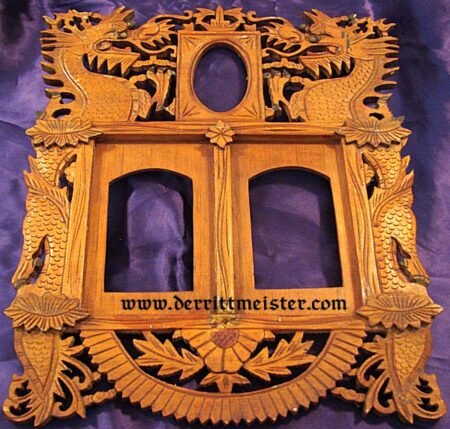Description
During the Imperial German Period, the business of writing letters was an important part of daily life. It became an art in itself, and setting up a proper desk included a number of accessories. These might include a desk stand to hold ink bottles (no ballpoints back then) and pens. One might have an ink blotter to dry one’s work, (before that sand was sprinkled across the wet ink to dry and keep it from smudging). One might also have letter openers and any number of personal items set on the desk to display one’s personality. One might also have a leather folio to organize important papers, much as we might use in and out baskets today. At the upper end of desk accessories, one found a personal seal or signet (petschaft) with the owner’s name or cypher. The seal was imprinted into hot wax melted across an envelope’s flap. The seal was pressed into the cooling wax, preserving the sender’s initials or cypher. It was a very personal touch, which also assured the recipient (provided the seal was intact) that the contents of the letter had not been disturbed. These seals varied from simple to ornate. Seals belonging to members of German royalty are at the upper end of scale and run to the thousands of dollars. Today we are offering you a most interesting petschaft (seal) for Generalfeldmarschall Graf Helmuth von Moltke (1800-1891). Von Moltke was Chief of the Prussian General Staff beginning in 1857. From the time he assumed the position, he began modernizing the Prussian Army. The fruit of his efforts first was demonstrated in the 1864 Danish-Prussian War. These efforts proved overwhelming in the 1866 Austro-Prussian War. In the latter war, von Moltke held tactical command over the commanders in the field, including Kronprinz Friedrich Wilhelm (König Wilhelm/Kaiser Wilhelm I’s son, who later became Kaiser Friedrich III). Along with the continued modernization of the Prussian Army, von Moltke introduced a new style of warfare to Europe that he saw in the U.S. during the Civil War. He used railroads to move troops and supplies, as well as telegraphs for improved communication. In addition, Prussian troops were far better trained and equipped than any of the troops they faced. The Austro-Prussian War, which lasted from 14 June 1866 to 23 August 1866, was decisive. It gained Prussia a great deal of territory and consolidated its position as the dominant German power. Further modernization under von Moltke from 1867 through 1870 prepared Germany for its crushing defeat of France in 1870-1871. Again, von Moltke held overall command of all German forces and was the chief architect of the French defeat. As a result, Wilhelm I was elevated to Kaiser Wilhelm I and von Moltke was promoted to Generalfeldmarschall. Later he was created a Graf (Count). Von Moltke held the position of Chief of the Army Staff until he retired in 1888. He died in 1891. [Interestingly, his nephew, Helmuth von Moltke (1848-1916, known as von Moltke the younger) held the same Chief of Staff position from 1906 through 1914]. Generalfeldmarschall Helmuth von Moltke the Elder was one of the most beloved German army generals. The seal has an excellent likeness of von Moltke. It stands 2 3/4″ tall. Von Moltke’s stern visage looks out, wearing his schirmütze and an 1870 Grand Cross of the Iron Cross at his neck. The initials “KK” have been etched into the bottom of the seal. I want to make it clear that the seal was NOT produced for or owned by von Moltke! It is a patriotic piece saluting the great general.





